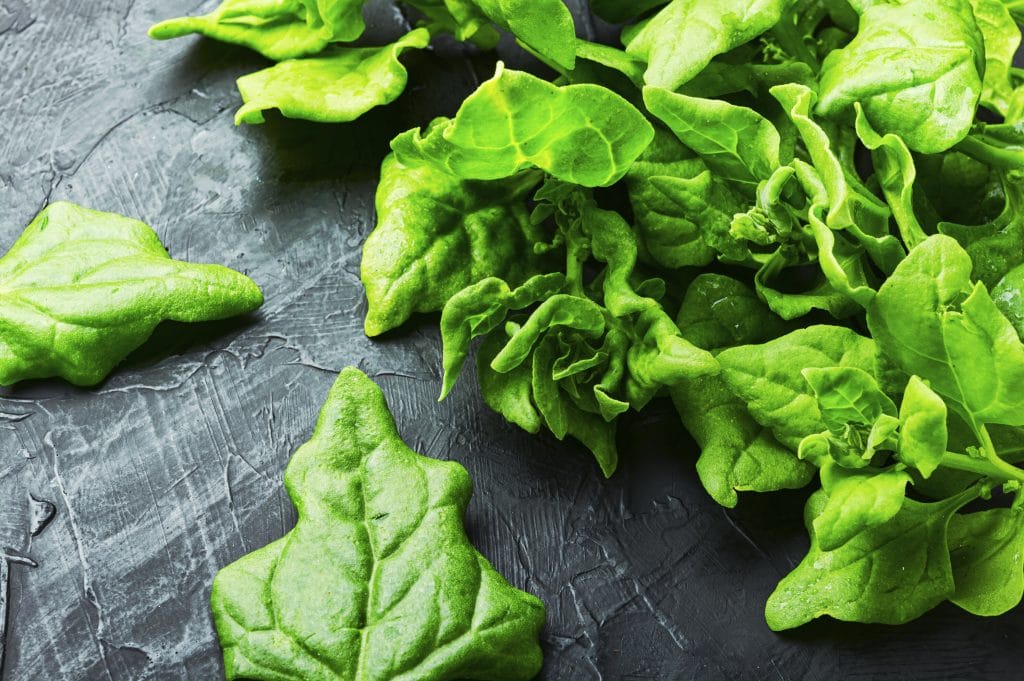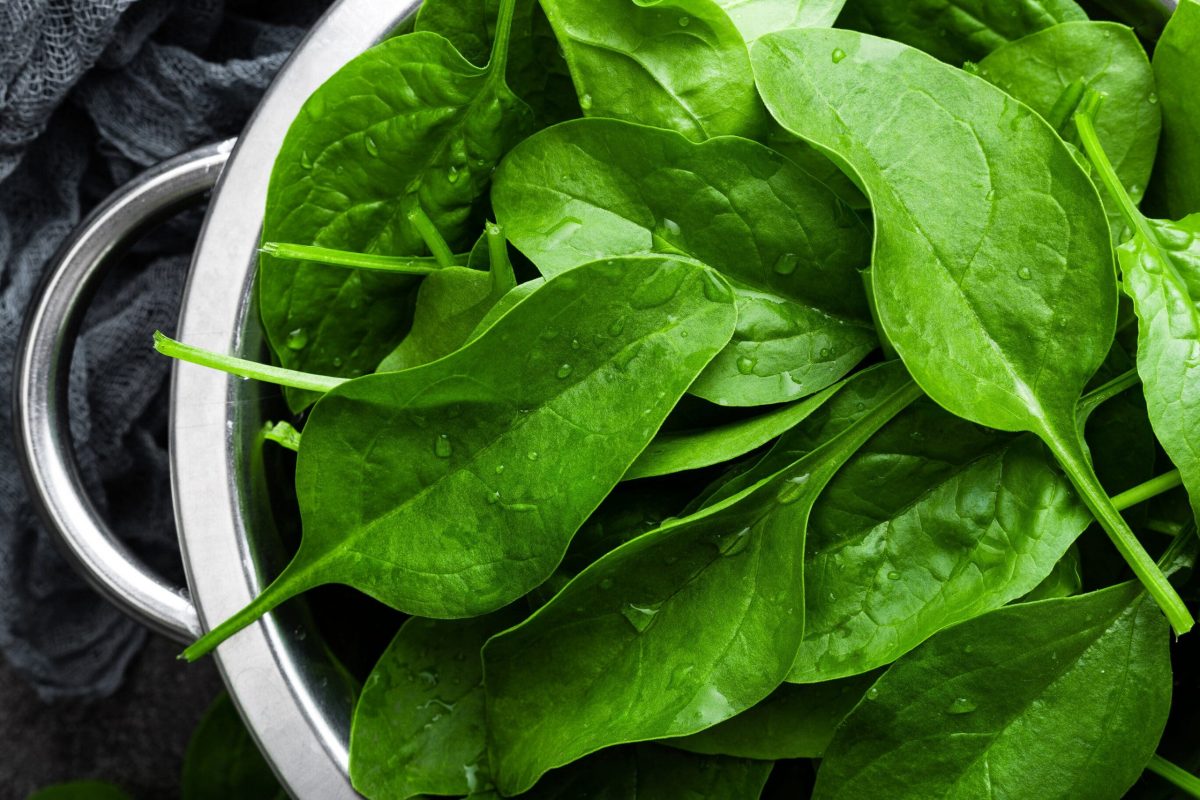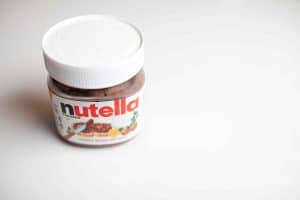How To Tell If Spinach Is Bad?
Important Note: When you buy through our links, we may earn a commission. As an Amazon Associate we earn from qualifying purchases. Content, pricing, offers and availability are subject to change at any time - more info.
Spinach, a leafy green vegetable, is nearly all water. This vegetable provides us with many health benefits, such as boosting energy levels, enhancing vision, and maintaining bone health. Spinach can be incorporated into various dishes, so you can make it really appetizing; however, ensure that the spinach is crispy and fresh; otherwise, you might pick up a few problems. How can you tell if spinach is spoiled?
You can tell when spinach is bad by the color and texture of the leaves. The leaves will darken or turn yellow around the edges. The spinach becomes soggy and slimy, emitting an unpleasant odor. At this point, it is necessary to chuck out the spinach before anyone accidentally consumes it.
Let us figure out how and why spinach goes bad, what the consequences are of consuming bad spinach, and ways to store this vegetable to keep it fresh for as long as possible.
- How To Tell If Spinach Is Bad?
- Why Does Spinach Go Bad?
- How To Keep Spinach Fresh?
- How To Freeze Spinach?
- The Best Containers To Keep Spinach In
- How To Keep Spinach Dry?
- What Happens If You Eat Bad Spinach?
- So, How To Tell If Spinach Is Bad?
How To Tell If Spinach Is Bad?
It is quite simple to identify spoiled spinach. Just use your senses to spot bad spinach! Here are three ways to tell if spinach is bad:
Unpleasant Odor Emitting From Spinach
A strong and sour odor is never good when it emits from food. The musky odor only worsens the longer you store it in the refrigerator, so the moment raw spinach takes on such a smell, you should dispose of it.
The Color Of The Spinach Darkens Or Leaves Turn Yellow
If the spinach leaves darkened, it means that it is no longer safe for consumption. Sometimes the edges of their leaves turn yellow, which is another sign of spoiled spinach.
However, only a tiny part of the spinach leaves turns yellowish in most cases, and it is still deemed safe to eat. Many people make their spinach dishes, not realizing the changing color of the leaves, but luckily the ingredients used in dishes can wipe out the taste.
The Texture Of The Spinach Is Moist And Slimy
Food texture is important, especially if it is a great indicator of how fresh ingredients are. Fresh spinach is supposed to be dry with hardy leaves and firm stems.
If the spinach is soggy and shriveled, avoid using and consuming it. This is the main sign of spoilage. It is almost nauseating thinking of slimy and moist spinach, but it can definitely happen.
Spinach is not the only leafy green vegetable that gets slimy and moist.
What Does Fresh Spinach Look Like?

When you go shopping, look for spinach with vibrant green leaves that are firm and crispy. The crispier and greener the leaves are, the fresher the spinach. Do not purchase spinach with discolored or watery stems.
Pay attention to these features whenever you buy pre-packed spinach and reject bags with oodles of condensation dribbles as this only promotes spoilage, causing the spinach to go bad quicker.
Spinach is packed with many nutrients. This leafy green vegetable consists of Vitamin A, Vitamin C, Vitamin K, potassium, folate, and iron. However, spinach is filled with fiber, so consuming too much of this vegetable can cause gas build-up, bloating, cramping, and abdominal pain.
Our bodies need ample time to digest foods like spinach because it is impossible to metabolize an excessive number of leafy greens at once.
Why Does Spinach Go Bad?
Moisture causes spinach to go bad. Spinach has high water content, and it is lovely to have if you want to add more H20 to your diet. Whenever we buy spinach, we need to make sure that we store it, so it keeps out air and moisture.
If there is too much air or moisture in the container, the spinach will become slimy, change color, and smell unpleasant.
How To Keep Spinach Fresh?

Fresh spinach can last up to two weeks, that is, if you store the leafy green vegetable properly. However, store-bought spinach has an estimated use-by date and usually has a sticker stating how long it can be refrigerated (around two to five days).
Cooked spinach does not last much longer; you can expect signs of spoilage in the next three to five days.
Interesting fact: Cooking spinach at 170°F for 15 seconds can destroy E.coli O157:H7 bacteria.
It is worth mentioning that you must avoid washing spinach prior to storing it because the access water can promote spoilage, so to increase shelf-life, only wash the spinach before you use it.
Ensure that fresh spinach is thoroughly washed before using it because it is extracted right from the soil it contains pathogenic microorganisms (viruses, fungi, bacteria, etc.).
To keep the spinach fresh for as long as possible, you need to store it properly. Here are a few tips to keep spinach fresh and safe for consumption:
You will need sheets of paper and a big enough container.
- Cover The Bottom Of The Container With Paper Towels
The paper towels will make sure that any extra moisture from the spinach is absorbed. Ensure that the paper towels are dry as well as the spinach. Do not put wet and watery spinach on top of the paper towels; otherwise, the paper towels will become soggy.
- Place Dry Spinach In The Container On The Paper Towels
Place the spinach on the paper towels whichever way you would like to. I suggest layering half of the spinach on paper towels and adding another layer of paper towels. You can then add the remainder of the spinach. This is the best method, especially if the container is extra-large.
- Separate Spoiled Or Bad Leaves
Remove bad and wilting leaves from the container. It can cause the rest of the fresh spinach to rot quicker.
- Close The Container And Keep It In The Refrigerator
Once you are satisfied and certain the spinach is stored properly, place it in the refrigerator as soon as possible. Do not keep the spinach out for long.
Another way of preserving the freshness of spinach is by using bread. Surprisingly, this method can keep the spinach fresh for seven to eight days. Avoid doing this if you or someone else has a gluten allergy. Here is how you can do it:
- Cover the bottom of the container with paper towels.
- Place the dry spinach on the paper towels in the container.
- Layer two or three slices of bed on top of the spinach.
- Place more spinach on the bread and repeat step number three if necessary.
- When you place your last bit of spinach over the bread, cover it with a paper towel, close the container and store it in the refrigerator.
If the paper towels become too soggy in the container, remove and replace them with clean and dry ones. Your spinach will stay dry and fresh for longer.
How To Freeze Spinach?
Many people prefer freezing spinach because it can last between nine and fourteen months and can remain edible past this time too. Ideally, freeze spinach at 0°F (-18°C), making sure that the packaging or container is properly sealed and remains intact.
Although blanching can cause the spinach to lose nutrients, it prolongs its tastes, preserves the vibrant green color, and effectively slows down the enzymatic process that speeds up the rotting process.
To ensure that spinach stays fresh while frozen, follow the following steps:
- Blanch the spinach in boiling water for approximately two minutes to prolong its taste and preserve the color and nutrients.
- Immediately soak the blanched spinach in cold water to cease the cooking process. Keep it in the cold water for no more than two minutes.
- Portion the spinach in serving sizes or place portions in an ice-cube tray.
- Place it in a freezing bag and squeeze out as much air as you can to avoid excess moisture.
- Label the freezing bag, adding the date you placed it in the freezer as well.
The Best Containers To Keep Spinach In
This is my list of quality containers. It is great for storing foods other than spinach as well.
- Tupperware Containers
Of course, Tupperware is first on my list! They have a variety of containers that come in various colors too. Their quality only seems to improve as the years progress.
- Ecowaare Reusable Mesh Storage Bags
These reusable storage bags are eco-friendly, BPA-free, washable, and come in different sizes. I find it convenient to store fruits and veggies.
- Rubbermaid Storage Containers
The Rubbermaid containers reduce spoilage using FreshVent technology. It regulates the flow of carbon dioxide and oxygen to produce the perfect environment for vegetables. Crisp Tray also helps keep moisture from gathering.
- OXO GreenSaver Produce Keeper
These containers have carbon filter traps (lasts 90 days) that absorb ethylene gas that reduces spoilage, and slow down the rotting process. The colander keeps food away from the sides of the container to promote airflow and prevent decay.
You can also find an adjustable vent on top of the container that maintains ideal humidity levels for all kinds of produce.
How To Keep Spinach Dry?

A salad spinner is the most effective way of washing spinach and keeping spinach dry. It removes excess water from the spinach and is a great tool to use on all greens. After you use the salad spinner, place the spinach (single layer) on a paper towel so that it can dry faster.
Alternatively, lay the washed spinach on a paper towel if you do not have a salad spinner. Placing another paper towel on the spinach and let it absorb the extra moisture.
What Happens If You Eat Bad Spinach?
If you consume spoiled spinach, you will most likely get food poisoning. Bacteria grows quickly on rotten spinach and other vegetables and fruits. Germs that contaminate leafy greens include E. coli and norovirus, also known as the winter vomiting bug. You can also contract other harmful bacteria such as listeria or salmonella.
More than half of foodborne illnesses were caused by fruits and vegetables. Because we generally consume produce raw, it is exposed to harmful bacteria that might make you sick.
Common symptoms of food poisoning include:
- Diarrhea
- Vomiting
- Nausea
- Stomach cramps and other types of abdominal pain
People can experience other symptoms like fever, loss of appetite, malaise, etc.
Food poisoning is usually self-diagnosable and can go away without treatment; however, seek medical attention if the symptoms become severe. Staying hydrated is very important since the symptoms cause loss of bodily fluids (electrolytes).
How to Treat Food Poisoning at Home
- Dehydration and the loss of bodily fluids are detrimental to your health. Drink plenty of water and other liquids to replace the loss of electrolytes.
- Sip small amounts of fluids even if you continue vomiting or suffer from diarrhea.
- Avoid eating sugary, spicy, ad fatty foods. Alcohol, dairy products, and caffeine can worsen symptoms. Stick with blander foods such as rice, bread, and toast. Eating bananas are beneficial too. They have high potassium content and replace lost nutrients, making your stool firmer.
The best fluids that promote hydration are sports drinks, coconut water, fruit juices, and electrolyte-infused drinks. Saltwater and electrolyte tablets are also effective.
The probability of food poisoning should not be a reason to avoid eating fruits and vegetables. When you practice good hygiene and proper storage, then the likelihood of contracting foodborne illnesses is zero to none.
So, How To Tell If Spinach Is Bad?
Spinach is a versatile vegetable you can add to almost any dish under the sun. Ensure the spinach you purchase is a vibrant green with crispy and firm leaves. Avoid using spinach with darkened, wilted stems. Spoiled spinach usually gives off a bad smell and produces a slimy substance due to exposure to air and moisture.
Shriveled and bad leaves must be removed before storing spinach in the refrigerator. Otherwise, it will induce the decaying process, which means the vegetable will not last long. When you store spinach, ensure it is dry and uses paper towels to absorb extra moisture from the leaves. The container should be sealed tightly to elude air from entering.
























